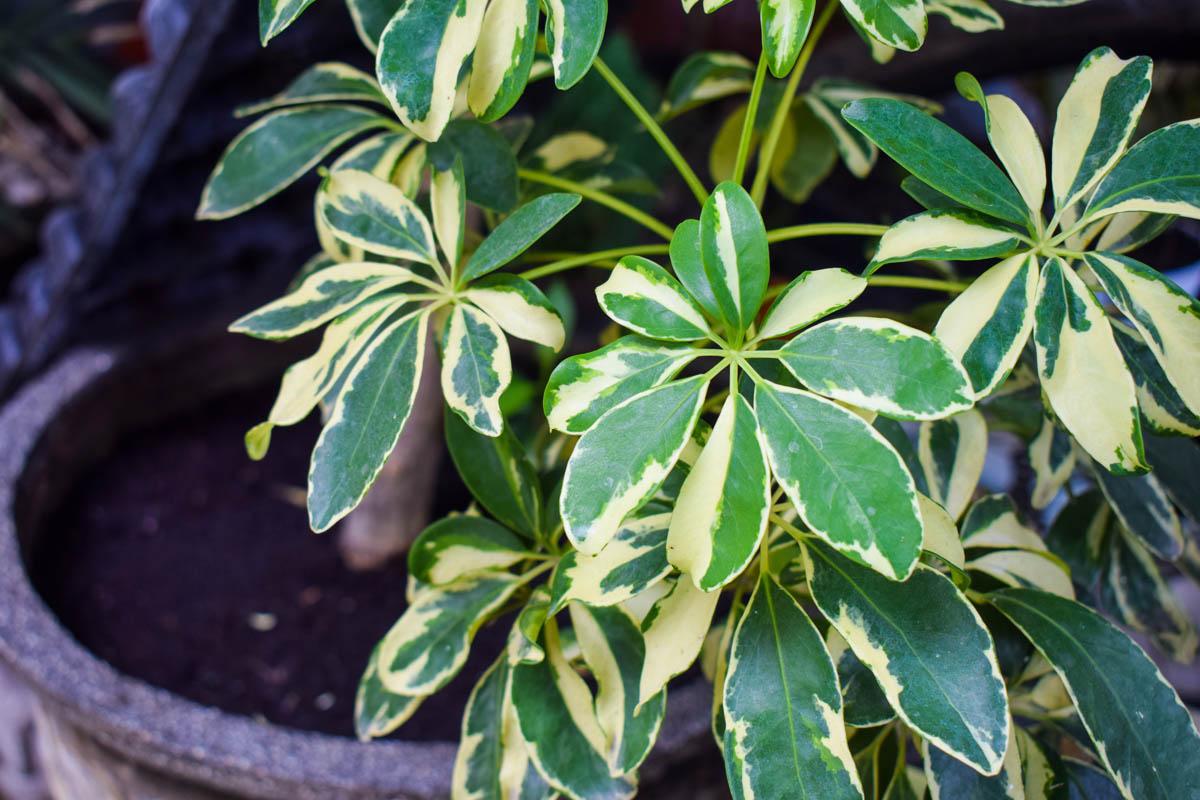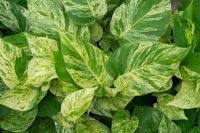Is umbrella tree toxic to dogs?
The umbrella tree (Schefflera spp.) is toxic to dogs. The toxic principles are an irritant sap and insoluble calcium oxalate crystals known as raphides. Raphides are tiny needle-like crystals that are arranged in bundles. When the dog chews on any part of the plant, these needle-sharp crystals penetrate the oral mucosa causing intense pain, burning and in some cases, swelling.
What is umbrella tree?
- Family: Araliaceae
- Botanical name: Schefflera spp.
- Plant type: Broadleaf evergreen
- Common names: Umbrella tree, Octopus tree, Starleaf, Australian ivy palm, Parasol plant
- Toxicity: Toxic to dogs
- Toxic parts: All parts
- Severity: Mild to moderate
- Toxic principle: Insoluble calcium oxalate crystals
Umbrella tree is a genus of flowering plants made up of 600-900 species native to tropical Australia, New Guinea, Java, China and Taiwan. The plants feature shiny, oval leaves which grow in clusters of 7-16 leaflets from a central stalk, which resembles an umbrella.
The umbrella tree is a popular houseplant due to its ease of care and unique leaf formation. The most popular species include Schefflera actinophylla (umbrella tree), and the smaller Schefflera arboricola (dwarf umbrella tree).
Toxicity
The University of California classes Schefflera spp. as 2 and 4.
- 2: Minor toxicity – Ingestion of these plants may cause minor illnesses such as vomiting or diarrhea. If ingested, call the Poison Control Center or your doctor.
- 4: The juice, sap, or thorns of these plants may cause a skin rash or irritation. Wash the affected area of skin with soap and water as soon as possible after contact. The rashes may be very serious and painful. Call the Poison Control Center or your doctor if symptoms appear following contact with the plants.
Clinical signs
Most animals will stop chewing in response to the bitter taste and acute pain. Symptoms relate to acute oropharyngeal pain from exposure to calcium oxalate crystals and dermatitis due to exposure to the irritant sap.
- Oropharyngeal pain
- Pawing at the mouth
- Loss of appetite
- Hypersalivation
- Soft tissue swelling
- Vomiting
- Diarrhea
- Difficulty swallowing
- Swelling of the mouth and throat
- Difficulty breathing (rare)
- Redness to the skin or mucus membranes due to contact with the irritant sap
First aid
Offer the dog a drink of something tasty such as milk or tuna juice or stock to flush the mouth and watch for signs of oropharyngeal swelling or difficulty breathing.
Treatment
If your dog has consumed umbrella tree, contact your veterinarian or pet poison helpline for advice. Dogs with self-limiting symptoms may be monitored at home. If the dog is experiencing swelling or difficulty breathing, seek immediate veterinary care.
The goal of treatment is to prevent further absorption and relieve symptoms. If ingestion was recent, the veterinarian may induce vomiting to clear any remaining plant matter from the gastrointestinal tract or pump the stomach (gastric lavage). Activated charcoal can be administered to bind to any remaining material.
Other therapies may include intravenous fluids to correct dehydration and electrolyte imbalances due to vomiting and diarrhea and painkillers. Intubation will be necessary for dogs experiencing breathing difficulty. This involves placing a tube down the airway to open up the airway.
Julia is a writer and landscape consultant from Wollongong with a love of horticulture. She had been an avid gardener for over 30 years, collects rare variegated plants and is a home orchardist. Julia is passionate about learning and sharing her knowledge of plant propagation and plant toxicology. Whether it’s giving advice on landscape projects or sharing tips on growing, Julia enjoys helping people make their gardens flourish.




